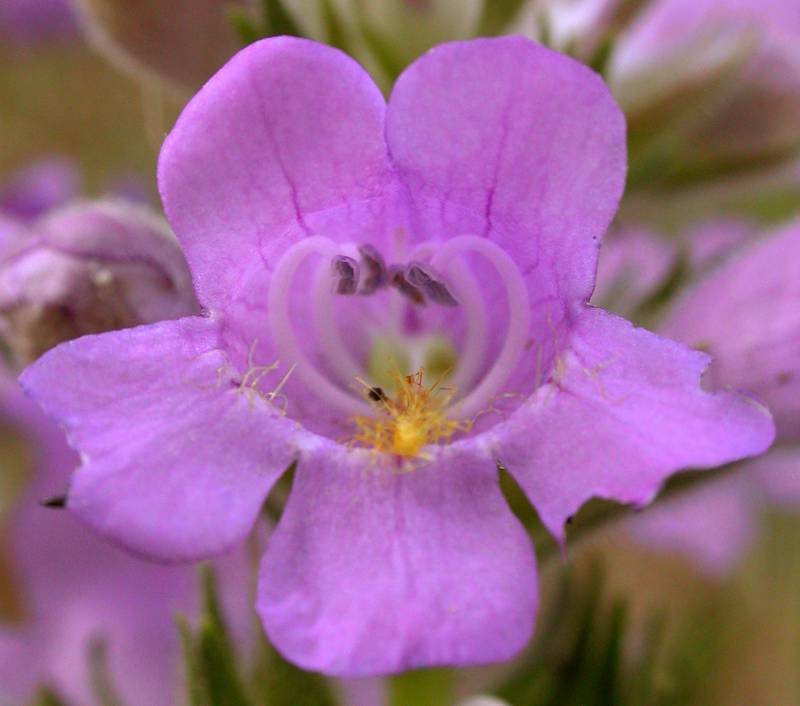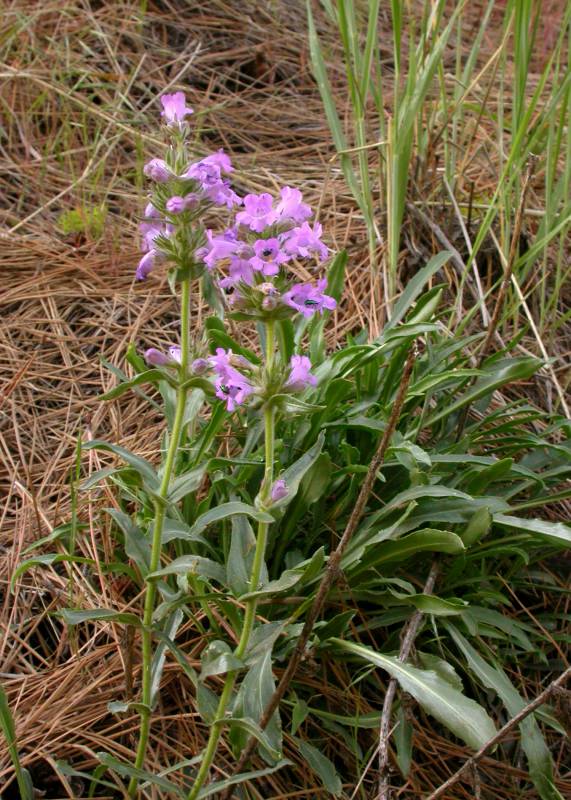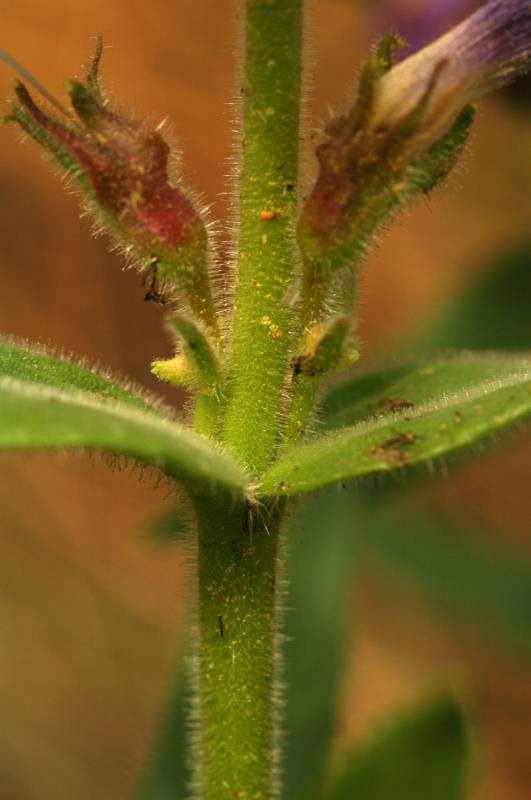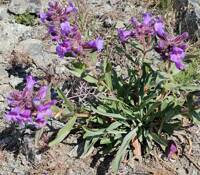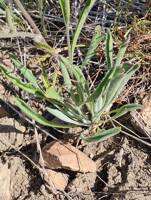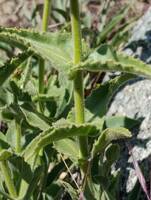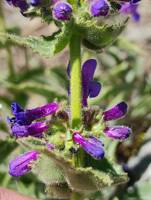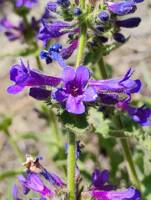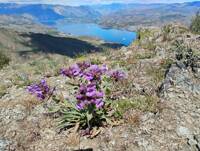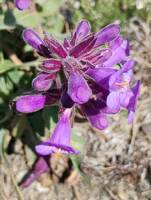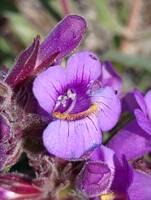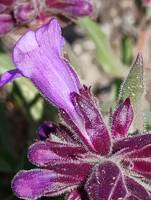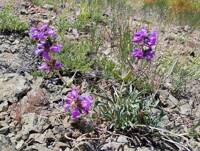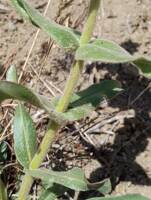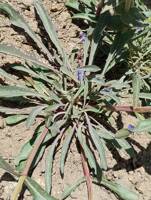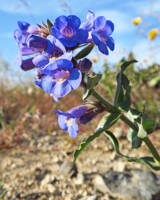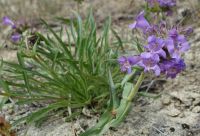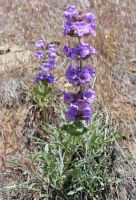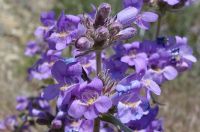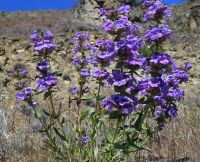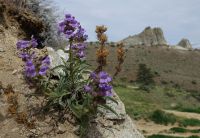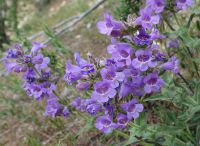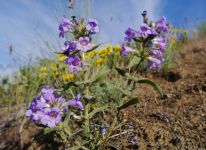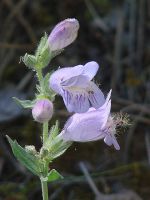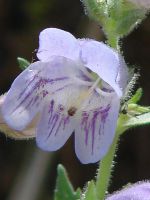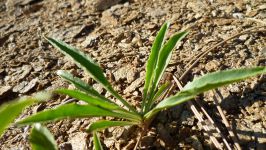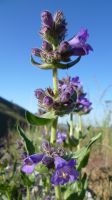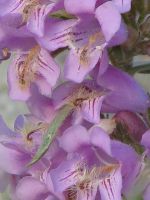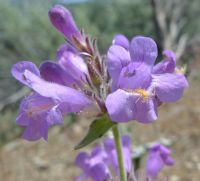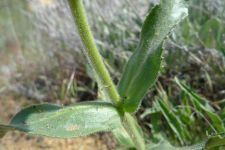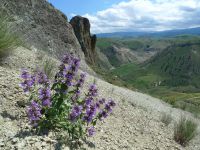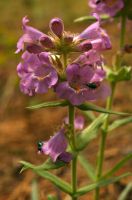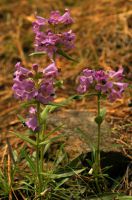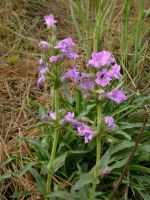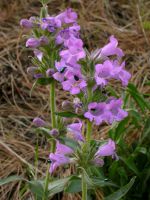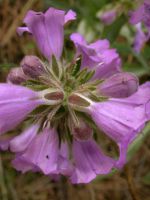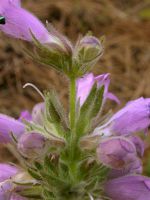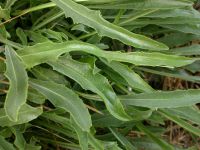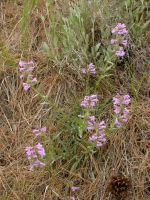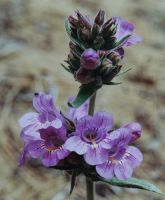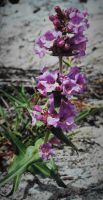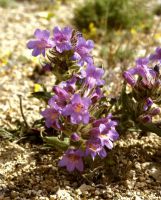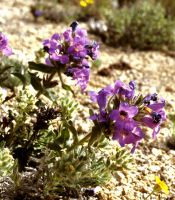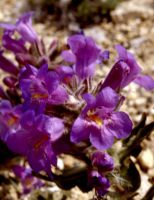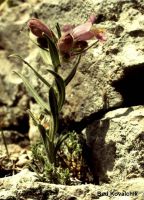Distribution: Occurring east of the Cascades crest chiefly in central and northeastern Washington; southeastern British Columbia to Oregon, east to the northern Great Plains.
Habitat: Dry, open places in the valleys, plains and foothills, sometimes ascending to middle elevations in the mountains.
Flowers: May-July
Origin: Native
Growth Duration: Perennial
Conservation Status: Threatened in Washington (WANHP)
Pollination: Bumblebees, bees, flies, wasps, hummingbirds
Perennial from a branched, woody base, the several stems 1-4 dm. tall; inflorescence with stalked glands, the rest of the plant usually grey-puberulent.
Leaves opposite, entire or with a few teeth, up to 13 cm. long and 2 cm. wide.
Inflorescence of several verticillasters; calyx elongate, 7-13 mm. long, the 5 segments narrowly lanceolate, wholly herbaceous; corolla covered with stalked glands, lavender to reddish-purple or deep bluish-purple, 2-4 cm. long, inflated, 6-14 mm. wide at the mouth, the lower lip the longer; raised portion of the lower lip strongly bearded; pollen sacs glabrous, 1.1-1.8 mm. long, wholly dehiscent, becoming opposite; staminode exerted, the tip slightly expanded, long-bearded most of its length; ovary glandular-puberulent near the tip.
Capsule 7-12 mm. long.
Publication: Fl. Amer. Sept. (Pursh) 2: 737-738. 1813.
- var. eriantherus – fuzzy-tongue penstemon Occurring east of the Cascades crest in the northeastern counties in Washington; British Columbia to Washington, east to Alberta, Montana, Wyoming, Colorado, and the northern Great Plains.
-
var. whitedii – Whited's fuzzy-tongue penstemon
 Occurring east of the Cascades crest, where endemic to Chelan, Douglas and Klickitat counties in Washington.
Occurring east of the Cascades crest, where endemic to Chelan, Douglas and Klickitat counties in Washington.
PNW Herbaria: Specimen records of Penstemon eriantherus in the Consortium of Pacific Northwest Herbaria database
WA Flora Checklist: Penstemon eriantherus checklist entry
OregonFlora: Penstemon eriantherus information
E-Flora BC: Penstemon eriantherus atlas page
CalPhotos: Penstemon eriantherus photos

